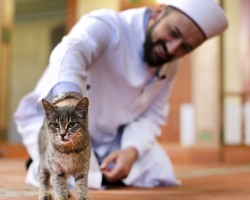All about marigolds and their varieties. How to plant and grow these flowers correctly.
Content
- Types and varieties of marigolds: bolero, karmen, lemon, tall
- Growing marigolds from seeds at home
- When to plant marigolds for seedlings?
- When to plant marigolds in open ground?
- When to dive marigolds after seedlings?
- When and how to fertilize marigolds?
- Diseases and pests of marigolds
- Video: Types and cultivation of marigolds
In cities and villages, marigolds love to decorate flower beds in squares and near public institutions. And it happens that plants on such not always well -groomed flower beds look faded and unhappy. Often such flowers simply evoke longing.
But the marigolds grown in private possessions are completely different. It seems that they have absorbed a piece of the sun and now they themselves radiate heat and light.

By the way, few people know that marigolds are growing on our lands not so long ago. The first seeds were brought from Central America by the conquistadors, so they appeared in Russia approximately at the same time, when tomatoes with potatoes. But on the American continent, marigolds are still growing in the wild.
- The Indians made a potion from them, driving a shaman could "communicate with the spirits." Varcary and wounds were also treated with marigolds, which, by the way, was not groundless, since now the beneficial properties of the plant have been studied and scientifically proven
- Now these flowers are very popular in the East: in China and India. When celebrating a dilating (the day of lights that symbolizes the victory of good over evil), the garlands from marigolds are decorated with houses, a sacred cow and even dogs. More photos and information regarding the unusual application of these colors in India can be found here
- In the countries of the Mediterranean, marigolds ... eat. In order to satisfy the needs of gourmets with these flowers, entire fields are planted

Types and varieties of marigolds: bolero, karmen, lemon, tall
There are three types of marigolds: erect, rejected and thin -leaved.
- Extreme velvet-rather large plants, grow to a height of 1OO-130 cm. They have powerful stems, large leaves, and large flowers, from 7 to 15 cm in diameter
- Rejected marigolds look like a branched bush 50-60 cm high, strewn with many colors
- Leaves little -leaved marigolds smaller, and the flowers consist of only five petals located in one row and small stamens

Belro marigolds
More than 50 species of these colors are known, but there are the most popular and beloved varieties. Belro marigolds -This is a classic type of plant 15-20 cm high with lush inflorescences and wavy petals of yellow-red. When it comes to marigolds, most people represent them. This variety belongs to the form rejected marigolds. The bolero variety tolerates the partial shade well and blooms 1.5 months after the appearance of seedlings.

Such marigolds are unpretentious in care, love sunlight, but can grow in the shade.
In fairness, it is worth noting that there is a whole family of marigolds Bonaza, with flowers very similar to the Bolero variety. In particular, these include: marigolds Bicolor with darker petals, marigolds Bonanza Flame in color resembling fire, marigolds Bonaza Beewhere, on the contrary, more red and less yellow and others. In addition, in stores you can purchase packages with seeds of different varieties called "Bonaza Mix."

Velvetsy Carmen
Also belong to rejected marigolds. They have dark red petals and a yellow middle with stamens. There is a thin yellow rim along the edge of the petals. The height of the bush - up to 30 cm.

This variety, like the Bolero variety, is unpretentious and does not require constant attention from the gardener.

The plant is undemanding to soils and abundant watering, but grows more powerful on light, fertile soils.
In order for the flowering of marigolds to last longer, you need to break the buds that have already faded

Lemon velvet
Those who love velvets of lemon color will find many varieties on sale. Such as Lemon miracle, yellow baby, golden age, moonlight, sunny and others.

Lemon velvets look good in a one -color flowerbed, but you can show imagination and make a flower bed with interspersed colors of other species.

Tall marigolds
Tall marigolds grow up to 100-130 cm high. They look good in combination with more miniature flowers if you plant high flowers in the center and low flower beds along the edge.

Growing marigolds from seeds at home
- It is believed that the optimal time for planting seeds in open ground - beginning of May. Indeed, for the rapid appearance of sprouts, the air temperature should be from 20 to 24 degrees
- The earth is desirable to be moderately wet
- For planting, make a groove with a depth of about 5 cm deep, pour the ground with water and sprinkle the seeds evenly, then again pour the furrow with the ground
- Shoots appear after 3 to 10 days, depending on the ambient temperature

In cold land, seeds can die or germinate for a very long time. Therefore, after the appearance of the sprouts, it should be provided to the marigolds a sufficient amount of light and moisture. Earth does not need to overlaw in order to avoid the appearance of fungal diseases and water seedlings when the earth has completely dried up.

When to plant marigolds for seedlings?
- First of all, you need to plant tall marigolds on seedlings, it is recommended to sow them in pots in mid -March
- Rejected and thin -leaved marigolds sow in the beginning of April
If you observe these terms, then all marigolds will bloom at the same time, in early June. If you live in the region with a warm climate and want marigolds to bloom earlier, then you can independently adjust the time of planting seeds for seedlings.
Remember that marigolds die at air temperatures below minus 2 ° C, so it is advisable to plant them when the threat of frosts already finally passes.

The seeds of marigolds are quite large and can be immersed in the ground to a depth of 0.5-1 cm. If you sow them in pots, it is better to use ready-made universal soil mixtures for seedlings. You can mix these mixtures in a proportion of 1: 1 with the ground.
So that moisture does not linger, there should be good drainage in the pots

When to plant marigolds in open ground?
It is recommended to plant marigold seedlings in open ground up to 1 month. Therefore, you need to sow seeds 1 month before landing plus from three to ten days to germination of seeds.
It is possible to increase the time in the pots, but in this case, the plants should be provided with top dressing and sufficient light. Enchanted from a lack of light, marigolds do not take root well and lag behind in growth.

When to dive marigolds after seedlings?
Gardeners have no unequivocal opinion about whether it is worth diving seedlings in general and the seedlings of marigolds in particular.
- On the one hand, when diving seedlings (transplants from a smaller container into a large one), the root system of the plant always suffers, which affects it negatively
- On the other hand, there is more space for the growth of roots, which means the plant should grow faster
Thus, it makes sense to dive mariglates only if you have received too thick shoots. If you initially sowed seeds 3-4 pieces in a plastic pot, then there is no need for this.
The best time for diving occurs when the sprout has the first two real “carved” leaflets (two oval leaves that grow even earlier). It should be noted that marigolds are a relatively unpretentious plant, and they usually tolerate transplantation well.

When and how to fertilize marigolds?
It is not necessary to fertilize marigolds, they will delight with rapid growth and lush flowering and so. But if you decide to feed them, then they will be grateful for this. More than others need plant fertilizers that grow in closed containers: boxes or flowerpots.

Before planting in a pot or landing in open ground, the earth can be mixed with mineral fertilizer, which is popularly called an amphora or nitroamophone.
Attention! Do not try to stir these fertilizers in water, then to water the flowers. Capsules simply will not dissolve

To nourish already planted marigolds, any mineral fertilizers for flowers that are sold in liquid form and contain: nitrogen, potassium and phosphorus.
Do not make fertilizer often, because of this, the bushes will greatly grow, but will bloom later. Fertilizes marigolds only three times a season:
- When the height of the seedlings is 10-12 cm
- When buds appear
- When marigolds will bloom for the first time
In addition to please marigolds, you can take care of the quality of the soil.
- These flowers do not like heavy clay soils, so it is advisable to mix the earth before planting with peat or sand
- It is also necessary to loosen the soil when a crust forms on it, because it is very important for velvets that the roots receive enough oxygen
- In order to avoid drying out, it is advisable to fill up areas near the flowers with straw

Diseases and pests of marigolds
Velvetsy distinguish aromatic substances into the air, so that no insects are afraid of them. Moreover, having planted marigolds near other plants can be protected from pests and them, some gardeners do just that.

All problems that malevo can appear in only an unfavorable external environment: mold sometimes appears from the cold and high humidity, and in severe heat and the absence of watering, spider mites can settle on the bushes.

- If velvets are amazed mold Watering should be made more moderate and ensure the conditions for the earth to dry faster: to sake plants if they are planted too thick and remove the most affected by the fungus
- To fight with spider mite It is also enough to simply eliminate the cause of its appearance: pour marigolds and spray the leaves with ordinary water (these ticks do not tolerate high humidity). Can be used for spraying and special tools, for example, Aktelllik, phytoverm, neoro

If you grow marigolds yourself, then you can get a truly tremendous pleasure. It doesn’t matter where your flowers grow - on a huge flowerbed, a small patch of earth or a window windowsill.
If you have put your soul and heart into your plants, then they will thank you with the greens of leaves, bright colors and an unearthly aroma. Many people love marigolds for the unpretentiousness and endurance of plants, beautiful flowers and pleasant, spicy aroma.








